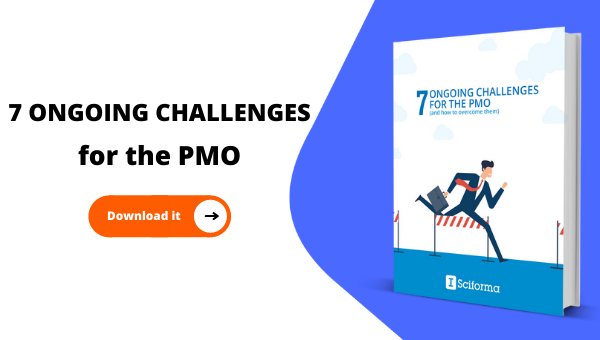Project Portfolio Management, as a professional discipline, was born from the need to streamline and structure project-related activities through the definition and enforcement of standard processes. The goal is to enable project managers and PMOs to optimize the productivity and efficiency of project execution work while maximizing the chances for projects to deliver expected outcomes and value.
This article provides an overview of key project management processes, along with advice to help you define and implement them.
What are Project Portfolio Management Processes?
The Project Management Institute’s PMBOK® Guide lists 39 distinct PM processes across five groups: initiation, planning, executing, controlling, and closing. These processes are consistent across organizations and industries. Here’s what each group consists of:
Phase 1: Project initiation
This first phase provides a broad definition of the project that you are about to launch. It involves determining the need and requirements for the project: What is the rationale behind the initiative? What should it bring to the organization? Who are the key beneficiaries? When should you reap the benefits? What conditions and constraints must be taken into account to achieve the objectives? Here are a few of the questions to ask and answer at this stage. Once you have a clear idea of the goals and scope of your project, you can then start drafting a high-level timeline and budget and a mapping of key stakeholders.
Phase 2: Project planning
While the initiation phase generally leaves out the technical specifications, completing the planning stage requires drilling down into the details. Your goal here is to come up with a solid roadmap for your project, including (but not limited to) a comprehensive list of material and technical requirements, a resource plan to match the needs, and a detailed schedule for execution and delivery. Building and implementing an effective project roadmap is usually the most important part of project management.
Phase 3: Project execution
This stage is where project teams come into play and perform the actual work while project management professionals act as facilitators. This includes taking action to optimize workflows, solving any issue or blocker that might hinder team members in their effort, and ensuring smooth interactions and effective collaboration across teams and stakeholders.
Phase 4: Project controlling
In addition to maintaining a conducive and enabling environment for project work, project managers will also monitor progress and make sure that everything is going according to plan. They should leverage a set of KPIs to track the effort, resource consumption, and cost and to make sure that the project stays within schedule, budget, and scope.
Phase 5: Project closing
This final phase takes place after delivery and validation by the key stakeholders. At this stage, project managers need to tie up any loose ends and complete administrative requirements (e.g. closing contracts with suppliers or external contractors). They’ll also issue a closing report, possibly based on a project review meeting organized to assess the overall performance of the execution work. Finally, they’ll complete and archive the documentation related to the project for future reference.
Defining and Optimizing Your Project Management Processes
In order to determine and implement a cohesive and highly efficient project management process, start by analyzing your firm’s project activity and identifying your business drivers and blockers. Understand what the goals and objectives of your business are, what specific challenges and requirements you are facing, and where there is room for improvement. Draw a map of the various projects in your pipeline and assess their management methods: Which tools and methodologies are currently in place, and how are they performing? How do decision-makers select projects for the pipeline? Are execution workflows consistent and well-defined? Which channels do teams use to communicate and collaborate? Are there shared evaluation criteria and KPIs? Do you have dedicated frameworks for managing resources and risks?
This preliminary assessment will let you perform a gap analysis that should reveal the strengths and weaknesses of your project portfolio management processes. The goal is to identify specific areas for improvement and opportunities.
Another best practice is to engage in a detailed analysis of a couple of past projects. Perform an in-depth review of the work done throughout the life cycle of the project, try to figure out what worked and what didn’t, and identify key action that could be taken to improve the outcomes of similar projects moving forward.
Based on that understanding of the current situation and challenges of your project organization, you will be able to determine the project portfolio management processes that will help improve the performance and results of your project management activities in order to align project execution with the strategic drivers of your business.
Are you interested in project portfolio management processes and methodologies? Consider reading the following:







Benoît Boitard
Benoît has multiple professional experiences, working in particular as a digital strategy consultant, both in emerging start-ups and in large companies. These diverse experiences have imbued him with a global vision of project management in traditional and agile working environments.